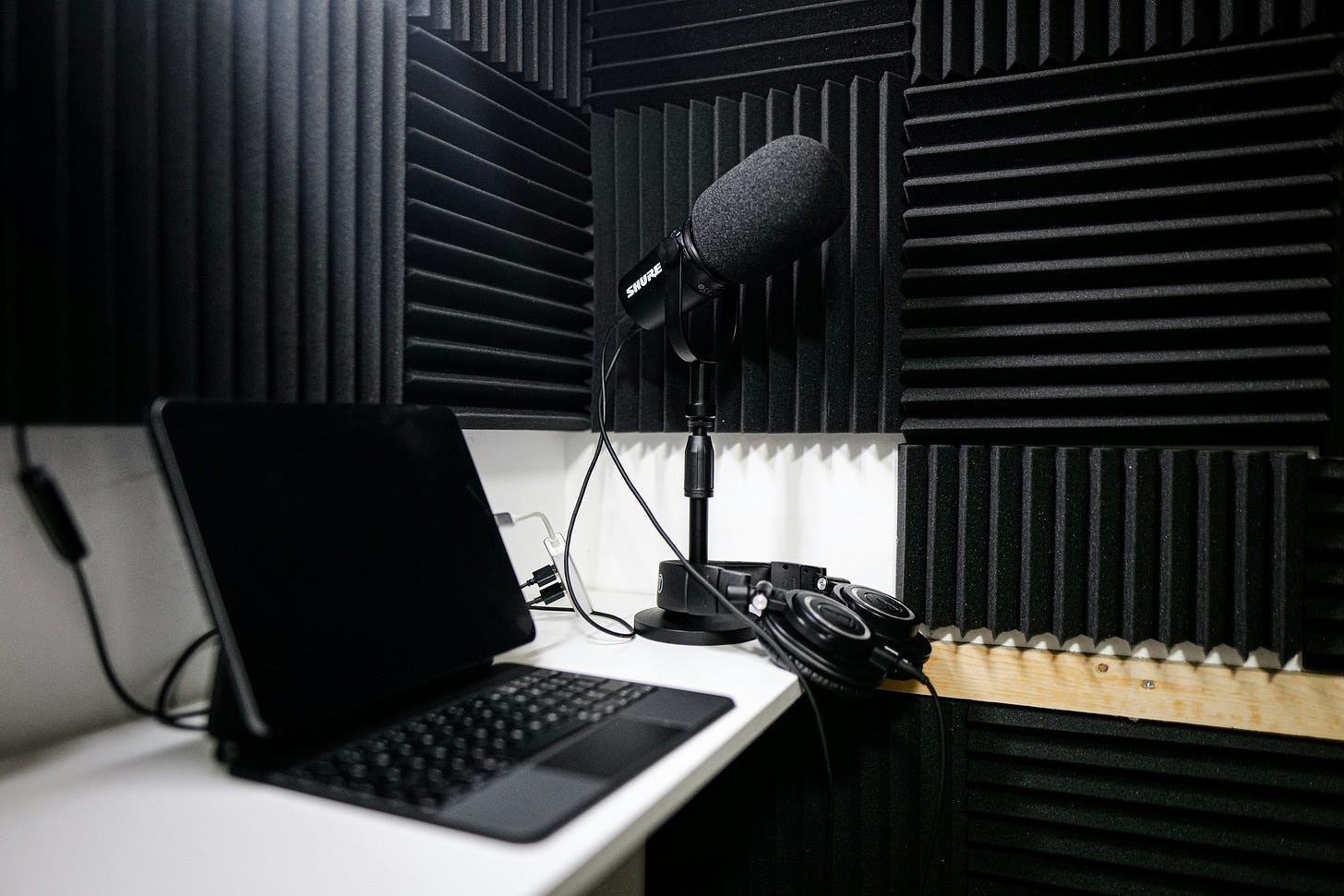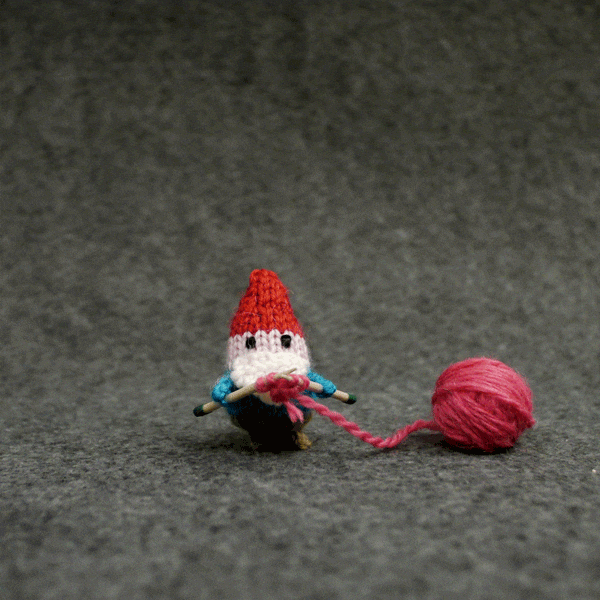Why diverse storytelling still has a future
Even with the new crisis in public media funding, local stations have moments to shine
Before mid-July, I had a completely different OIGO planned (that profile’s coming soon, I promise!). Then our industry melted down, with Congress taking public media funding off the table and the Corporation for Public Broadcasting announcing its January closure.
This edition felt like an important moment to reflect on public broadcasting, especially when it comes to diverse storytelling and representation.
I believe ardently in public media and our mission to serve communities and change lives. I also believe we can still meet that challenge. Noncommercial broadcasting existed before the Public Broadcasting Act of 1967. Thousands of broadcasters, from low-power FMs to public, educational and government TV, have served their communities for years without grants. This crash is such a setback, and we must continue on behalf of the communities that rely on public media to be there.
Among the countless pieces on public media funding, Jerry Del Colliano has one of the best. That’s because it’s unsparing (coming in hot with “stop the whining and dig in”) as it is specific on what the future is likely to hold. Among his comments:
The need for promotion to focus on positive impact, since the fundraising over defunding will only have short-term benefits.
NPR, PRX, WNYC and APM affiliation will decline as stations look to cut costs.
Future partnerships with local commercial broadcasters, which have long been in their cost-cutting era, around sales, content and more could be in the offing.
Stations may unload repeaters and full signals in a savings play. Owners, presumably colleges, may sell licenses to religious broadcasters or other nonprofits as they deal with their own finances.
Yes, there’s uncertainty, but I remain genuinely optimistic about the future of diverse storytelling in public media. A constellation of public media organizations have made many efforts over the last decade to tell richer, more inclusive stories about the cities they’re located in. I expect connecting with new audiences is no longer a niche notion, but a business decision public media is taking more seriously.
Here are a few areas I’m most optimistic when it comes to seeing diverse engagement and content developments in our post-funding landscape:
Collaboration shines bright. Del Colliano says partnerships with podcast networks and other media are likely. Initiatives like the recently concluded America Amplified launched dozens of endeavors with stations, and proved how fruitful diverse collaborations could be for all parties. You can also get inspired by Rocky Mountain PBS, KSUT and Native Lens working together. In the long term, these alliances may be our strength, helping us truly serve diverse communities. We need many more such partnerships.
Digital expansion is essential. Diverse audiences are already online, and eager for content that speaks directly to them. KERA’s bilingual podcast efforts are one inspiration. To add, building digital offerings that amplify existing broadcast work is a lighter lift than original digital programming from scratch. See what KQED is doing with its existing radio program for ideas. As an addendum, we may want to prioritize mobile and low-bandwidth solutions to effectively serve rural communities and those without home access. New Hampshire Public Radio’s email is one example.
Pooling resources counts more than ever. Initiatives like the Press Forward grant awarded to Rocky Mountain Community Radio show the power of collaboration. Ampers in Minnesota is another instance of how statewide sharing elevates everyone. Uniting around content and infrastructure not only helps with costs, but deepens our service to diverse communities.
"How can we" conversations will turn on the light. Some of our most contentious debates focus on diverse content and metrics. It’s time we moved beyond the false either/or choices. More organizations (such as what we’re seeing in Utah) are trying to embrace new ideas, listen to new voices, and prioritize reaching diverse and underserved audiences more effectively. Additionally, I’m reminded of my OIGO conversation with Claudio Cabrera around shifting how we think as media leaders so we best serve audiences.
Innovative membership models are overdue. Our traditional membership approaches have been good, but do need reinvention. Breakthrough campaigns like that of public media veteran Teresa Frontado and the sustained success of the 51st should educate us about ways we could evolve. Elsewhere, Jerrod Knight envisions a new world where stations free up resources for local work through fresh national models. Now is not just the moment to experiment, but to fully commit.
Creative solutions are emerging. Dick Tofel has persuasively argued that public broadcasting must break free from traditional, top-down structures, often led by those who created the current situation, to truly do bold work. Nonprofit news outlets like Cicero Independiente are among a class of news organizations that are remaking their models in immersive ways. The movement to empower local, independent voices is quietly growing and promises exciting possibilities.
Public safety as a renewed mission. During the recent rescission debates, our role in emergency alerts and civic information didn’t land as powerfully as we hoped. Still, we have a fresh opportunity to partner with local governments and community organizations on multilingual disaster response. Take what community licensee KWMR has long been doing in its community, working with city and county officials to inform residents about fires and other calamities in the region. How the station has embedded itself in essential civic functions may spark your own efforts.
Obviously, some of the projects were made possible through CPB. Others came about by other means. We’re just now in our “by other means” era.
Lastly, a comment about despair, and blame.
It's easy and tempting to use White House actions as a chance to dunk on public media’s past failures or missed opportunities. Yet that's not what this moment is about. And we should seriously question the motives of those framing this wholesale abandonment of a public good as a referendum on educational broadcasting.
Yes, there are plenty of reasons to be critical of public media. Accountability is healthy, even necessary. For example, public media leaders who fled this year from DEI, naively hoping to preserve funding yet only to discover there was no shelter, deserve your distrust. But let's also be clear: cuts to public media have been a very long game. In fact, these reductions have been pursued for generations, driven by both good- and bad-faith arguments. One need only revisit Mr. Rogers' defense of public broadcasting back in 1969 for perspective.
Moreover, public media funding clawbacks aren’t happening in isolation. Since January, Medicaid, Veterans Affairs, health research, education grants and even the Voice of America have all faced harsh reductions. Many of these are for higher stakes and far greater amounts. What is happening to precious American institutions is a broader conversation fit for a dozen newsletters, at least. The content disputes must be understood in this framework.
It’s also necessary to say that these matters are more than grants, but presence. One of the saddest parts of CPB’s end what will be the loss of truly committed advocates for public broadcasting. Jacquie Gales Webb, Kathy Merritt and Joy Lin and many others are true professionals and friends to so many in this industry. Losing their voices on the national stage is crushing, because educational radio and television have long relied on leaders to convey our stories.
It’s undeniable that local public broadcasting may contract sharply. We talk lots about how cuts will especially impact rural, Tribal and culturally diverse communities. But this calamity is going to affect everyone. I choose to see this challenge as our opportunity. With other strong hearts and minds, I believe we together can reimagine public media as community-rooted, digitally nimble and mission-resilient. That transformation isn’t just about survival. It’s about continuing to tell the stories that connect and define us. I believe the seeds for serving diverse communities will continue to flower, if we let them. 🟢
Cafecito: stories to discuss ☕
New platform. Latino USA has joined iHeartMedia’s My Cultura Network, a cohort of 60 Latino-led podcasts. The program will continue to be served out to public radio stations. 📱 Radio Online has more.
Losses. Radio Bilingüe is among organizations estimating the financial effect of the end of CPB support. Leaders tell the Fresno Bee that about $300,000 of its $4 million budget come from this funding. 📉
Polling. LAist investigates the decline of Latinx support for Democrats, and some contentions that flaws in pollsters’ methodology may have prevented politicians from understanding the scope of the issue. 📁
Big boost. The Latino Media Consortium, which supports Latine-owned and -run media organizations, has received a major investment from Press Forward. 🌼 In a press release, LMC says the $750,000 grant will support infrastructure.
Voces, which places Latinx students in Idaho newsrooms, has also received a Press Forward grant.
New collaboration. Listening Post Collective, Documented, Conecta Arizona, Sahan Journal and El Tímpano have launched the Immigrant News Coalition. More via Documented. 🖊️
El radar: try this 📡
Ask how women in communities are affected by ICE enforcement. 🚓 Colorado Public Radio has a great story on how residents are using social media and word of mouth to address the needs of residents in the face of immigration raids.
Educate about diabetes. KGOU reported on how local Hispanic groups are trying to teach residents about diabetes prevention and how to care for loved ones with diabetes. 🚑 Other public media organizations have spotlighted this story in their own communities for good reason.
Related: WHYY has a delightful story on local efforts to align good nutrition with cultural traditions.
Share the love for Latin jazz. Connecticut Public offers a reflection on a local Latin jazz festival and the story of the late musician, Ramon Santiago, who brought it to life. 🎷
Look at multicultural creators. Previous OIGOs have touched on how the bi- and multiracial experience is reshaping Latinidad. WUSF explores this matter in the context of a creator from a mixed household, related to cooking. 🍅 This is likely emerging near you too.
Highlight local Latine artists. MPR News profiled a local performer that is using comics to create conversations about Hispanic mental health. 🎹
The next OIGO arrives Sept. 12. Welcome to all the new subscribers who recently joined. 🙏 The originally scheduled profile of WFAE’s Julian Berger kicks off our fall biweekly OIGOs.
In October, I expect to release a resource guide for independent producers and podcasters interested in developing content for public radio. It’s one of the most common questions I get, and I hope this product of dozens of pitch meetings will be helpful. ✨ Do you have ideas that should be in it? Let me know.
I am headed to the Public Media Content Conference in just over a week in Salt Lake City. There’s some conversation that this could be the final conference, so I hope you can make it. 🎲 If you’re in the area, reach out and let’s meet up.
You can buy me a coffee if you’d like to support the newsletter.






